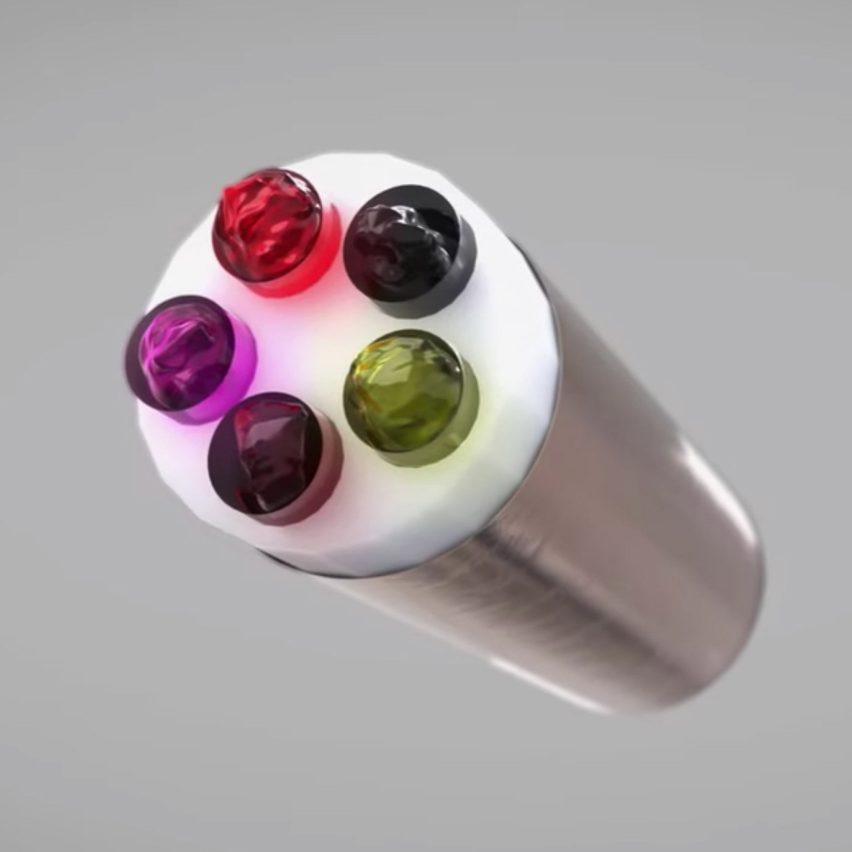
Japanese researcher Homei Miyashita has developed a lickable device that uses five gel nodules made of dissolved electrolytes to replicate different food tastes without the user having to ingest anything.
Called the Norimaki Synthesizer, the rod-shaped device is able to simulate any flavour represented by the five universally accepted basic taste sensations: sweet, salty, sour, bitter and umami.
Miyashita – a researcher and professor at Meiji University in Tokyo – and his team believe the discovery opens new possibilities for human-computer interaction. The Norimaki Synthesizer, they believe, could provide an entirely new medium for multimedia experiences.
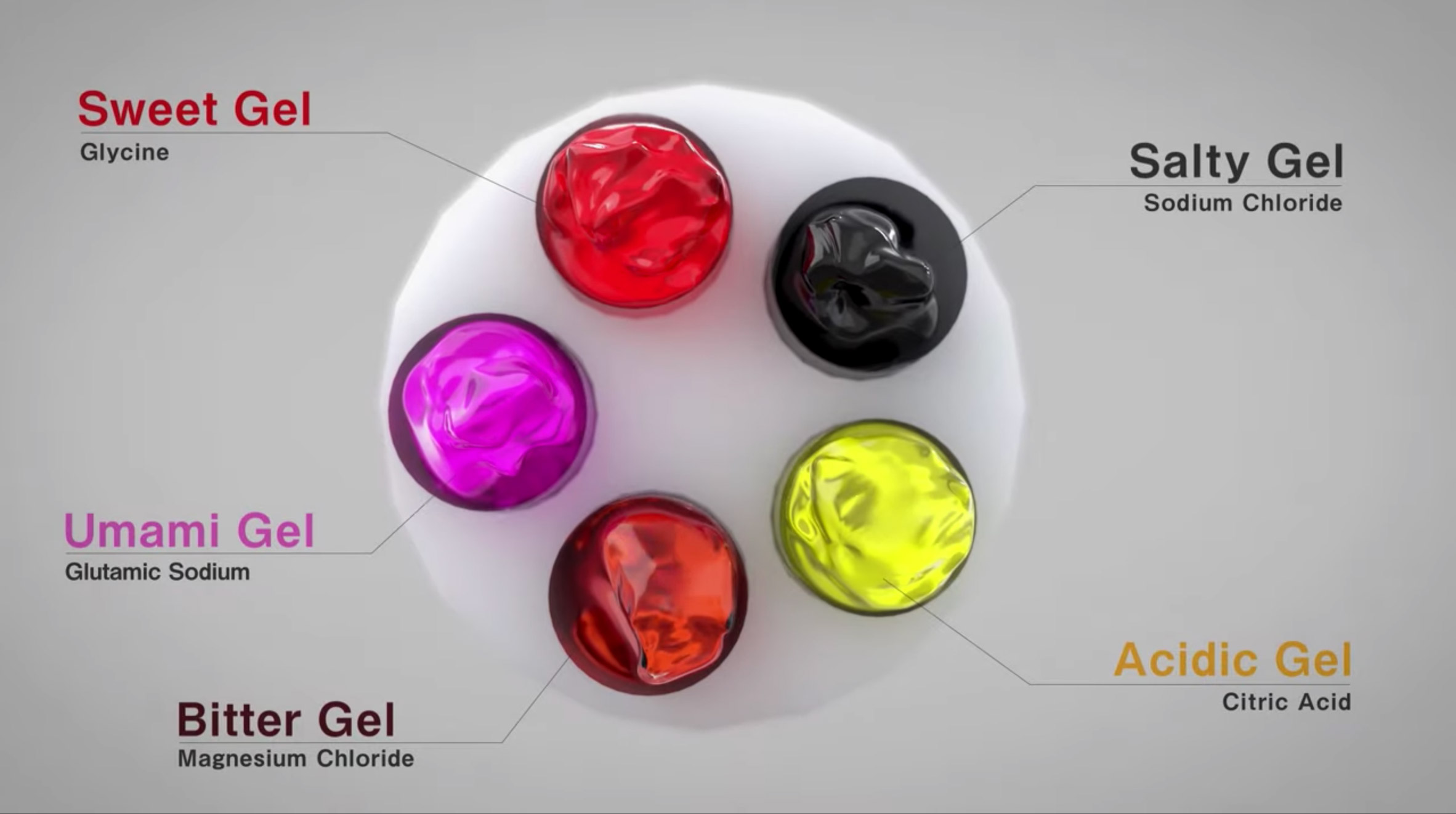
The gadget uses five gels made of dissolved electrolytes that, when electrically charged, provide controlled amounts of each of the five basic tastes to deliver a combination of tastes to the user’s tongue.
The research team liken the process to optical displays that produce many colours from lights of three basic colours (red, yellow and blue).
Each of the gels are made by dissolving five different electrolytes – sodium chloride, glycine, magnesium chloride, citric acid and glutamic sodium – in a small amount of water in separate solutions to create highly concentrated blends.
Food colouring was also added to distinguish each substance, including black (sodium chloride), red (glycine), brown (magnesium chloride), yellow (citric acid) and pink (glutamic sodium).
Heated agar – a jelly-like substance obtained from red algae – is then added to these solutions, which are inserted into a tube with a diameter of 6 millimetres and left to cool and harden into a gel.
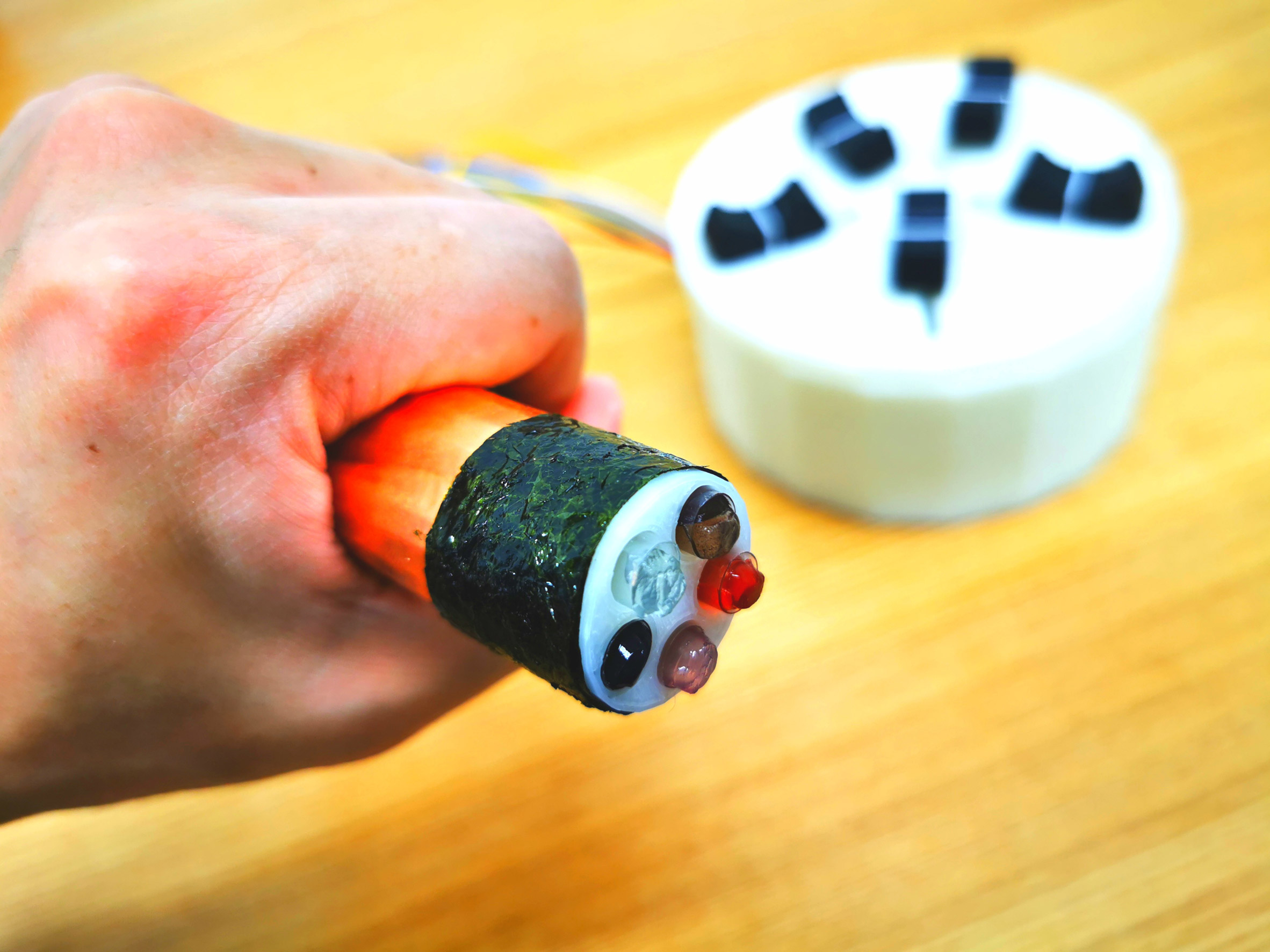
Platinum wire electrodes are inserted into the each of the five gels before being placed into the rod-like device, which has a diameter of 20 millimetres.
Each isolated gel can be given a different current intensity to individually control its taste.
Miyashita likens look of the hand-held device to a norimaki – a sushi roll wrapped in dried seaweed – from which the project takes its name.
The Norimaki Synthesizer is wrapped in copper foil, which acts as an anode, while the wire acts as a cathode. Together with the human body contact, these work to form an electrical circuit.
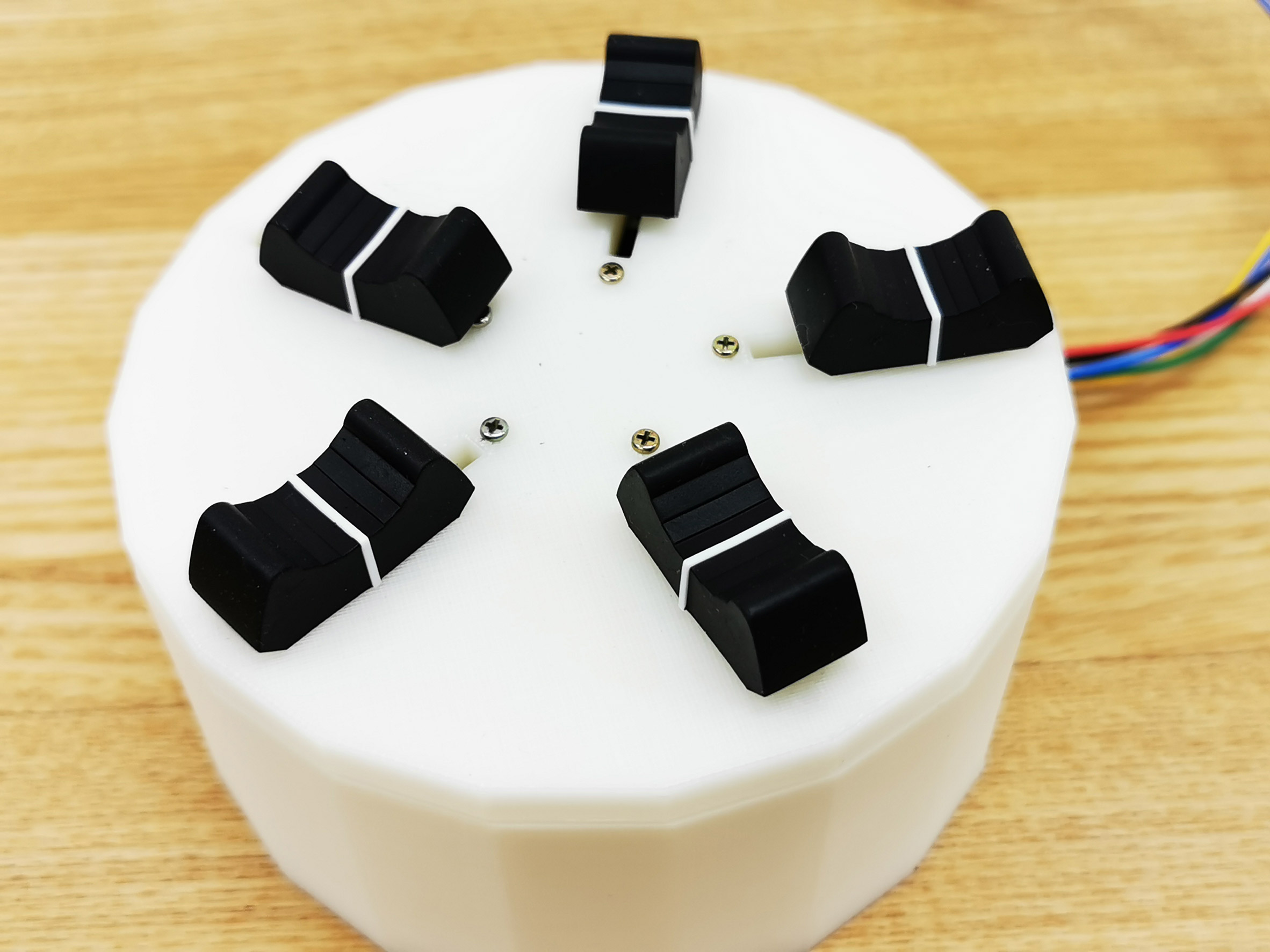
The other end of each wire is connected to a variable resistor, attached to a central controller.
By adjusting the sliders, Miyashita and his research team could change and transition between tastes, including going from a sweet taste like “gummy candy” to the salty and sour taste of sushi.
Fragrance, however, cannot be reproduced, the researcher told Dezeen, or the pungency of something spicy.
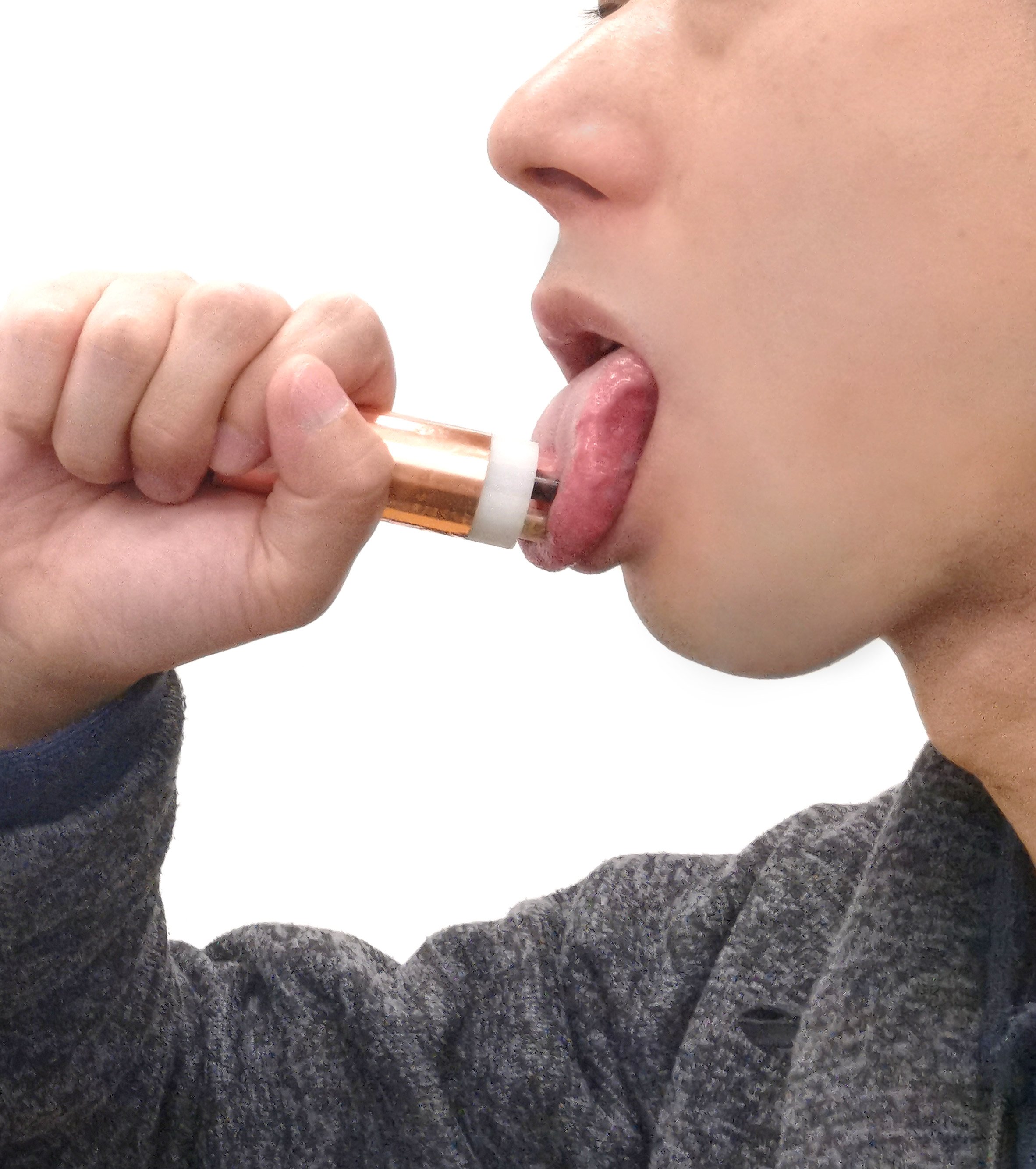
“When applied to the tongue with no voltage, the user can taste all five tastes,” explained Miyashita in his research paper on the Norimaki Synthesizer.
“However, when an electric potential is applied, the cations (positively charged ions) in the gel move to the cathode side and away from the tongue, so that the flavour is tasted,” he continued.
“In this way, we have developed a taste display that reproduces an arbitrary taste by individually suppressing the sensation of each of the five basic tastes (like subtractive synthesis).”
Many tech designers are experimenting with ways to use technology to replicate physical experiences. Students at the RCA have creeated a device that licks you during a phone conversation, and Studio Tada has developed a haptic fingernail that lets the wearer experience touch virtually.
The post Norimaki Synthesizer device uses electrically charged gel to simulate different flavours appeared first on Dezeen.